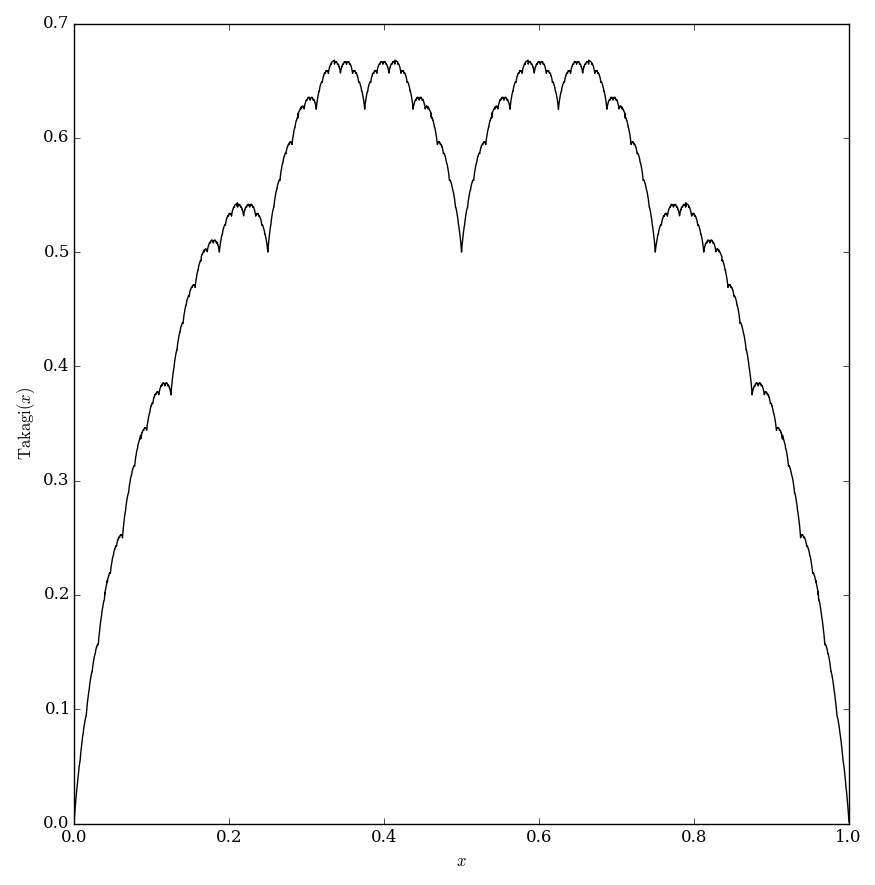Difference between revisions of "Takagi function"
From specialfunctionswiki
| Line 1: | Line 1: | ||
The Takagi function (also called the blancmange function) is defined by | The Takagi function (also called the blancmange function) is defined by | ||
| − | $$\mathrm{takagi}(x)=\displaystyle\sum_{k=0}^{\infty} \dfrac{\mathrm{dist}_{\mathbb{Z}}(2^n x)}{2^n} | + | $$\mathrm{takagi}(x)=\displaystyle\sum_{k=0}^{\infty} \dfrac{\mathrm{dist}_{\mathbb{Z}}(2^n x)}{2^n},$$ |
| + | where $\mathrm{dist}_{\mathbb{Z}}$ denotes the [[distance to integers]] function. | ||
| + | |||
<div align="center"> | <div align="center"> | ||
<gallery> | <gallery> | ||
Revision as of 03:19, 6 July 2016
The Takagi function (also called the blancmange function) is defined by $$\mathrm{takagi}(x)=\displaystyle\sum_{k=0}^{\infty} \dfrac{\mathrm{dist}_{\mathbb{Z}}(2^n x)}{2^n},$$ where $\mathrm{dist}_{\mathbb{Z}}$ denotes the distance to integers function.
Properties
Takagi function is continuous
Takagi function is nowhere differentiable
